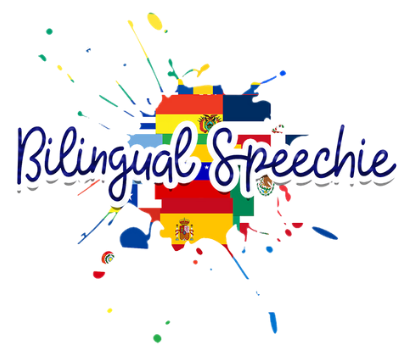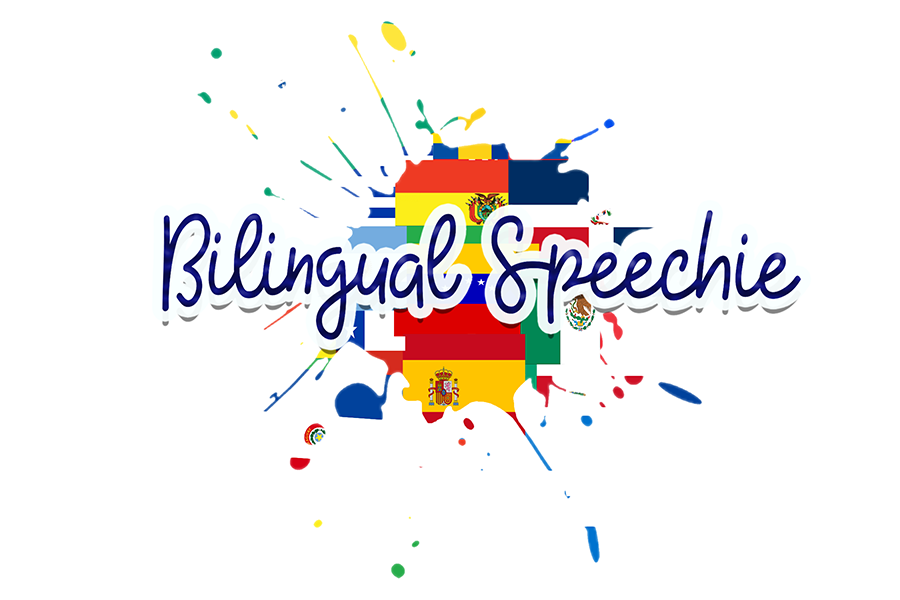by Liliana Diaz July 23, 2023
Have a student on your caseload that is demonstrating difficulty producing the CH sound? Perhaps you're a parent whose child is in speech therapy working on the CH sound?
The CH sound can be a tricky sound to teach because it's hard to visualize what's going on inside the mouth when saying the sound. But no worries, here are some tips to help achieve that tricky CH sound. These tricks have helped several of my students produce the sound in no time!
First let's begin by understanding how the sound is made. The CH sound is a palato-alveolar sound, WHAT DOES THIS EVEN MEAN??? Simple, the CH sound is made when your tongue makes contact with the hard palate. To make the CH sound your tip of the tongue and blade of the tongue has to make contact with the alveolar ridge (bumpy part of your mouth) and the sides of the tongue come in contact with your upper molars in order to stop the airflow and make that sound nice and short. Also, it's important that your child or client knows that the lips must be rounded like an "O" to make the sound.

For smaller children, I like to refer to this sound as the "Chu-Chu" sound and imitate the sound a train makes. Children learn best through play therefore, I bring out all the toy trains and we imitate the sound as much as possible during the session. It also helps to have a visual for the child throughout the session so I use the train flashcard from my Bilingual Articulation CH Flashcard deck.

A lot of my students who are having difficulty saying the CH sound often substitute the sound for an SH sound. Therefore, we compare the two sounds by using a visual. On a sheet of paper, I draw a long line to represent SH because the airflow is long. Then I draw a short like for CH to show that the airflow and sound are short in length. It helps my student understand that the CH sound needs to be as short as possible.

More visuals! I often explain to my students that CH is kind of like an SH but it's a very MAD and HARD SH. We practice saying the SH sound as HARD and as possible and then I cue the student to cut the airflow nice and short (usually by clapping my hands really quick).
A trick that has always helped achieve the CH sound is to practice saying a T sound followed by an SH sound several times. Start slow, and then go as fast as you can. Saying the 2 sounds REALLY fast makes the CH sound. Try it below!
T-SH-T-SH-T-SH-T-SH-T-SH
Lastly, I always recommend to PRACTICE, PRACTICE, PRACTICE! For my bilingual students, I always ensure that they can practice the sound in both languages; therefore, it's important to use cognate word pairs in my word selections to ensure carry-over into both languages.
Practice words like: Churro/Churro, Nachos/Nachos, Chocolate/Chocolate
For more practice words make sure to check out my Bilingual Articulation CH Flashcards!
Comments will be approved before showing up.
by Liliana Diaz December 14, 2023
by Liliana Diaz February 13, 2023 1 Comment
by Liliana Diaz January 12, 2023
Perhaps you recently got assigned to a new school or site that consists of a large bilingual and/or multilingual caseload, and perhaps you're not bilingual. Not speaking the student's language can be quite overwhelming and stressful (trust me, I've been there!). I know the feeling of not quite knowing where to start in intervention, or not knowing how to support your students. Well luckily, bilingual SLP, Ingrid Owens-Gonzalez has some important tips to share with all SLPs. Here are 3 things Monolingual SLPs can do to support bilingual populations today.

Who are we?
Bilingual Speechie LLC. is a small business dedicated to providing inclusive and engaging speech therapy resources and activities for bilingual children, parents, SLPs and educators.
Bilingual Speechie LLC promotes bilingualism and multilingualism by dispelling common myths, providing education on bilingual language development, and promoting heritage language maintenance amongst bilingual families.
About the Owner:
Liliana Diaz-Vazquez is a certified licensed bilingual speech language pathologist (SLP), currently practicing in Chicago, Illinois. She obtained her bachelor’s degree in communication disorders (2012) and her master’s degree in speech language pathology at Saint Xavier University (2014). She is a certified member of the American Speech-Language and Hearing Association (ASHA) since 2014, a member of the Illinois Speech and Hearing Association (ISHA) since 2014 and maintains licensure in the state of Illinois.
Liliana is a first-generation Mexican-American Latina, a small business owner, a full-time school-based SLP, & a bilingual parent, who takes pride in her roots, culture, & heritage language. She loves being able to share her experience as a Latina SLP, and a bilingual mom, as well as her culture & heritage language with the educator, SLP, and parent community.
Liliana Diaz-Vazquez has extensive experience working with the bilingual English and Spanish speaking population & multilingual population. She specializes in augmentative/alternative communication (AAC), bilingual language development and language delays/disorders in bilingual/multilingual children. She has also worked in the early intervention setting for several years where she gained vast experience working with interpreters and bilingual/multilingual families.
Liliana began creating digital bilingual resources and activities in 2014 out of need while working full-time in the school setting as a SLP. Liliana worked with many Spanish-speaking families and quickly realized that there were limited Spanish and bilingual speech therapy resources available for her students and their families. In addition, Liliana quickly became aware that there was a need for education about bilingualism and typical bilingual language development as many of the families she worked with had encountered misinformation about bilingualism. Liliana began developing resources and eventually started Bilingual Speechie LLC with the mission to provide education to SLPs and families about bilingualism, as well as provide inclusive and diverse materials for speech therapy in order to help bilingual families and SLPs gain access to appropriate bilingual materials for children with communication disorders.
Today Liliana currently works full-time in the Chicago public school setting as a lead bilingual SLP where she consults and collaborates with SLPs daily to help them understand how to assess and provide culturally and linguistically appropriate services for bilingual and/or multilingual students. She also runs her small business, Bilingual Speechie LLC, and is on a mission to expand and grow her business so that all SLPs, educators, and families can have access to inclusive, diverse, and bilingual resources in a variety of languages for speech therapy.
Professional Development:
Liliana has vast experience as a speaker/presenter and has presented at several conferences over the years. You can view all previous conferences and topics that Liliana has presented on here. Liliana is available to present on topics such as best practices when working with multilingual populations, bilingual speech/language assessment and treatment, goal writing with multilingual populations and much more. If you are interested in booking Liliana for a conference or event please don't hesitate to send an email at lilianadiaz@bilingualspeechie.com
 English
en
English
en
 English
en
English
en


Liliana Diaz
Author